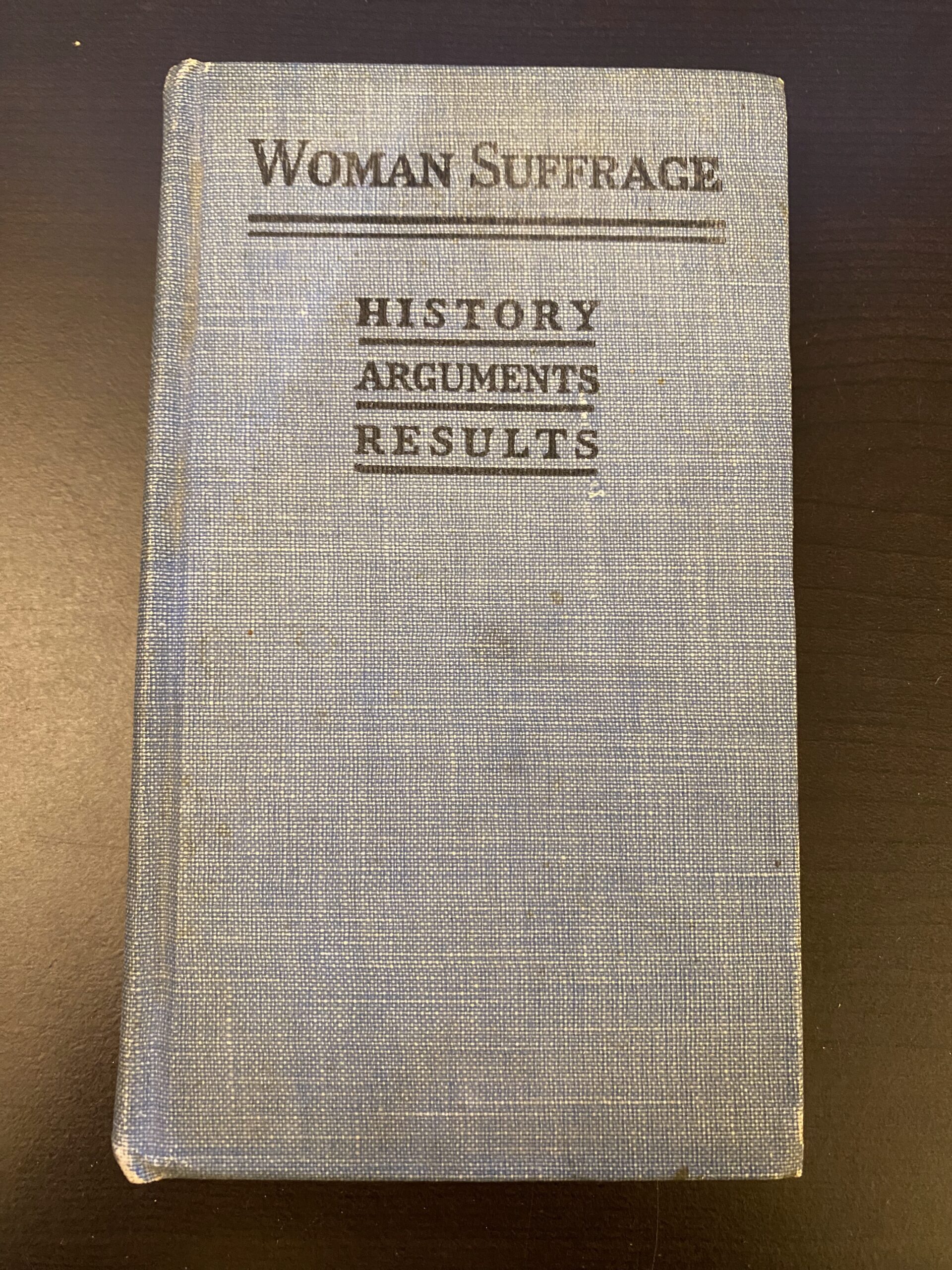- Title: Woman Suffrage: History, Arguments, Results
- Author: Frances M. Björkman and Annie G. Porritt
- Publisher: National Woman Suffrage Publishing Co.
- Estimated year of printing: 1916
Notes:
Revised Edition, March 1916
This is one of my favorite books in my collection.
Women gained the right to vote in the United States in 1920 with the 19th Amendment. It seems obvious and noncontroversial today, but it was a struggle at the time to achieve the right to vote on a national level. This book, known as “The Blue Book”, was published in several editions in the years prior to the 19th Amendment, in order to help support those who were arguing for women’s suffrage. It is small and not too long, but contains a wealth of information intended to help them make the case for women’s right to vote.
It contains a history of the women’s suffrage movement, where women currently are allowed to vote (other countries as well as several US states), impacts of having women vote in locations where they could, arguments for why women should vote, and also counter-arguments for common objections to women voting. The last section is the most interesting, by far — seeing what objections were encountered and how to argue against them. Reading through that section is like finding a time capsule — not just of antiquated attitudes towards women, but covering many other contemporaneous political and social viewpoints. It’s amazing to think that this book was only published a little over a hundred years ago, and how much things have changed.
Frances Björkman (1879 – 1966) and Annie Porritt (1861 – 1932) were prominent in the women’s suffrage movement, and members of the National Woman Suffrage Association. The National Woman Suffrage Publishing Co. was the publishing arm of the National American Woman Suffrage Association.
Historical context:
In many ways, this book is its own historical context. When it was published in 1916, women did not have the right to vote in the United States. It would be 4 more years before the 19th Amendment went into effect in 1920. Jeannette Rankin became the first woman elected to Congress in 1916, as Representative of Montana. Woodrow Wilson was President.

